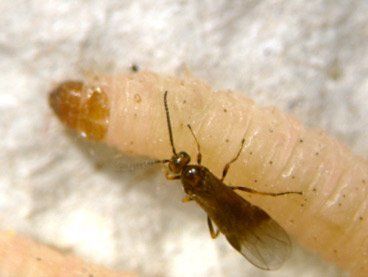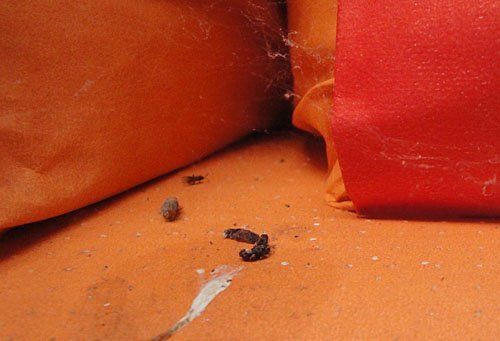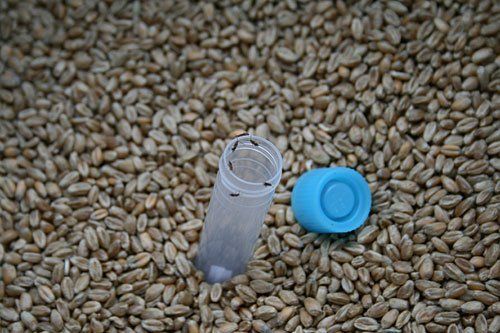The braconid wasp Bracon hebetor, also called Habrobracon hebetor, is one of the best studied parasitic wasps in the storage area. It paralyzes the free-living moth larvae by a sting, after that they immediately stop eating. In this way the parasitic wasp secures various larvae, makes them harmless and then starts laying eggs. The female Bracon lays its eggs on the outside of the moth larvae. The young wasp larvae feed on the moth larva of which only the dried up shell remains. Afterwards, the wasp larvae form mini silk cocoons from which a new generation of beneficial insects hatches.



The parasitic wasps orient themselves towards the smell of the moth larvae and their excrement. They are able to follow the pests into smallest gaps and cracks and even the hibernating larval stages in their cocoons are parasitized. Here, the braconid wasps turn out to be real trackers: they even bite through the cocoons of the moth larvae to reach them. From temperatures of 16°C upwards, the beneficial insects start laying eggs, we recommend a use as soon as in spring daily maximum temperatures of 20°C are reached. The optimum for the development of the parasitic wasps is between 25-30°C, for a short time also maximum temperatures of up to 35° are tolerated. The period of use is between the middle of April and the end of September.



The use is especially effective in bulk cereals or with cereal products. It is favourable to start treatment for the treatment of empty spaces after a thorough mechanical cleaning and when placing the grain into stock. If the pests have already established, beneficial insects can be used parallel to hygiene measures in „hotspots“. In spite of a certain settling and reproduction, as long as moth larvae occur, Habrobracon hebetor should be released repeatedly in order to build up sufficient control pressure.
The following pests can be controlled by Habrobracon hebetor:
- Mediterranean flour moth (Ephestia kuehniella)
- Indian meal moth (Plodia interpunctella).
- Warehouse moth (Ephestiae elutella)
- Bee moth (Galleria mellonella)
The use of Habrobracon hebetor (against the larvae) can usually be combined with the use of the Trichogramma parasitic wasp (against the eggs). To determine the degree of infestation and the control success, pheromone traps should be used.
In grain warehouses and in processing companies, e.g. mills or bakeries, good control successes are achieved with it. Important for the determination of the degree of infestation and the ideal starting date is a monitoring or surveillance by using pheromone traps.
Application recommendation for preventive use:
The first treatment takes place immediately in the empty warehouse or directly after storage. Release interval: 14 days, temperature range 15-35°C. The quantities needed may vary depending on local circumstances.




